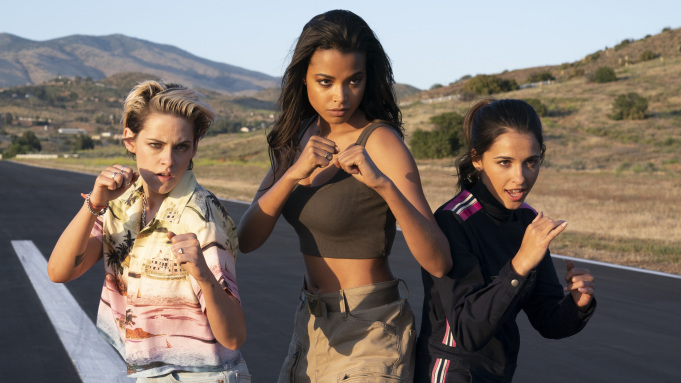By Abby Sorkin SC’20
Seeing Charlie’s Angels reminded me just how extraordinary it still feels to watch a female driven, female directed movie. It’s the waning months of 2019 and I still can count on one hand the movies I’ve seen where women were the focus. Note the plural there; I don’t want to diminish the impact of a single heroine like Katniss Everdeen or Captain Marvel, but the fact remains that seeing movies where multiple women take up most of the screen time is incredibly rare.
In fact, only two come to mind immediately. Charlie’s Angels, directed by Elizabeth Banks and Booksmart, directed by Olivia Wilde.
Both movies were directed by actresses, both focused on coming of age and perhaps most importantly, the core of both movies were friendships between the women.
The core relationship in Charlie’s Angels is between Sabina, portrayed by the always talented Kristen Stewart, and Jane, played by the brilliant newcomer Ella Balkinska, with the two being the audience’s introduction to the world and the emotional center of the movie. These two represent a genderbend version of a type of relationship that has been shown in film before: equals with different skills and contrasting personalities who learn to not only respect but care for one another.
That description brings to mind several different male friendships, from Sherlock Holmes and John Watson to Steve Rogers and Tony Stark, but female examples seem much more scarce. Male-female friendships come to mind, like Ron Weasley and Hermione Granger or Percy Jackson and Annabeth Chase. Of course, those eventually develop a romantic bond.
In this way, Sabina and Jane break the mold of what is expected. This is however only possible because there are so many roles for women to play in this movie. Women in Charlie’s Angels are just confined to the smart woman who stands her ground, or the flirtatious one, or the kickass fighter. Sabina plays the role of the flirtatious one, but she’s in fact the damaged sass-master. Elizabeth Banks as Bosley is the woman on the headset and the woman behind the crown. They are allowed to play more than one archetype and as a result engage in more complicated relationships.
The emotional peak of the movie is the scene where Jane is crying over Sabina after they both nearly die in an explosion. This scene had elements of the typical stoic character breaking and the fun loving character being serious yet still sarcastic. It seems utterly unremarkable upon my first watch of this film but on my second viewing it tugged at me.
It’s a scene I’ve seen over and over in fantasy, but it is rarely between two women. Repeatedly, it has just featured one woman. From Sam and Frodo to Peter Parker and Tony Stark to Oliver Queen and John Diggle, male friendships always get the emotional resolution when it is not granted to the romance, and because female friendships are nearly always an afterthought, the catharsis granted from seeing growth is nonexistent.
Until Booksmart. Until Charlie’s Angels.
Until two movies brought female friendship into the focus.
Like Charlie’s Angels, the core of Booksmart is the friendship between two high achieving seniors about to graduate from high school. Amy, portrayed by Kaitlyn Dever, and Molly, portrayed by Beanie Feldstein, are going to go on an adventure worth of Bill and Ted themselves. However, amid the laughs and the first times and crazy encounters, the ultimate emotional moment comes during the party they’ve spent the entire night trying to get to where the fear of losing each other lays them both bare and truthful in front of everyone they’ll be leaving behind tomorrow.
It’s a buddy cop movie that should ride with the best of them. But the tears I cried during Booksmart were absent when I saw 21 Jump Street.
There’s a rawness that comes from being seen, even on a movie screen, even through fiction. And that rawness is something that I felt during both of emotional climaxes of the two movies I’ve pointed out.
I can’t help but think that having a female director is why these moments felt so real, why the friendships followed common patterns, why they were fun but also meaningful. To me as a viewer, there was no doubting the sincerity of the moments.
Maybe they represent a new age, maybe we’ll see more media where the center is women. Again, note the plural there.
But regardless of what might happen in the future, they both exist now. And that matters.
Image Credit: Deadline



